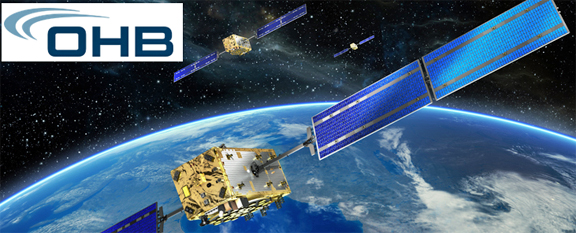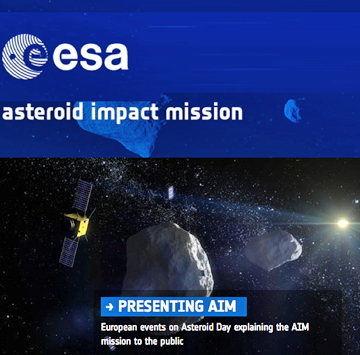[Satnews] OHB System AG has unveiled their design for the Asteroid Impact Mission (AIM), which occurred during the payload meeting at the European Space Astronomy Center (ESAC) near Madrid.
Lead-managed by OHB, the syndicate presented its specifications of the individual payloads and operations to ESA as well as the developers and primary users of the instruments.
With the AIM design study, OHB is part of the world’s first project for demonstrating how the Earth can be shielded from an asteroid impact. The purpose of the mission is to detect and chart a distant asteroid and to then watch it being struck by another spacecraft launched by NASA. The data collected will help to develop planetary defense strategies. To this end, OHB is lead-managing a syndicate in which Politecnico di Milano is performing the mission analysis, Telespazio VEGA is working on the ground segment and ground operations and Spin.Works is handling the control and navigation aspects of the mission.
The greatest challenge is currently the tight schedule. The mission must be commenced in October 2020 to achieve the launch window for catching the asteroid called Didymos and its moon when they are at their closest to the Earth.
AIM must be in position before late 2022 when NASA’s double asteroid redirection test, or DART, is planned to crash into the asteroid’s moon for detailed before-and-after impact monitoring. These observations will help determine how far the DART kinetic impactor has moved the asteroid moon.
The AIM and DART missions are two components of an international mission to be executed by ESA and NASA to demonstrate the ability to deflect an asteroid in a project known as Asteroid Impact and Deflection Assessment (AIDA). AIDA is an exciting and cost-effective mission for demonstrating different technologies to provide high-value asteroid science and benefit planetary defense planning.
Executive Comment
"That is why guidance and navigation form a crucial part of the mission design,” said OHB project manager, Marc Scheper."First, the spacecraft needs to find its way across 480 million kilometers of space to its target asteroid. Then it needs to perform visual detection to maneuver around the Didymos system, employing only a limited quantity of propellant,” Scheper adds.



